
Rhodochorton purpureum
Red Sea Moss, Purple Felt Weed
19 May 2022
Mill Bay, Port San Juan, B.C., Canada.
Tide: 0.3 feet at 10:27am PDT (measured at Port Renfrew Tidal Station)
Conditions: Partly cloudy, wind west 5 to 15 km/hour, sea rippled, low westerly swell, humidity 75%, 9˚C.
Moon: Waning Gibbous (81.8%, 19 days); Previous Phase, Full Moon, 15 May 2022 at 9:14pm PDT: Next Phase, Third Quarter, 22 May 2022 at 11:43am PDT.
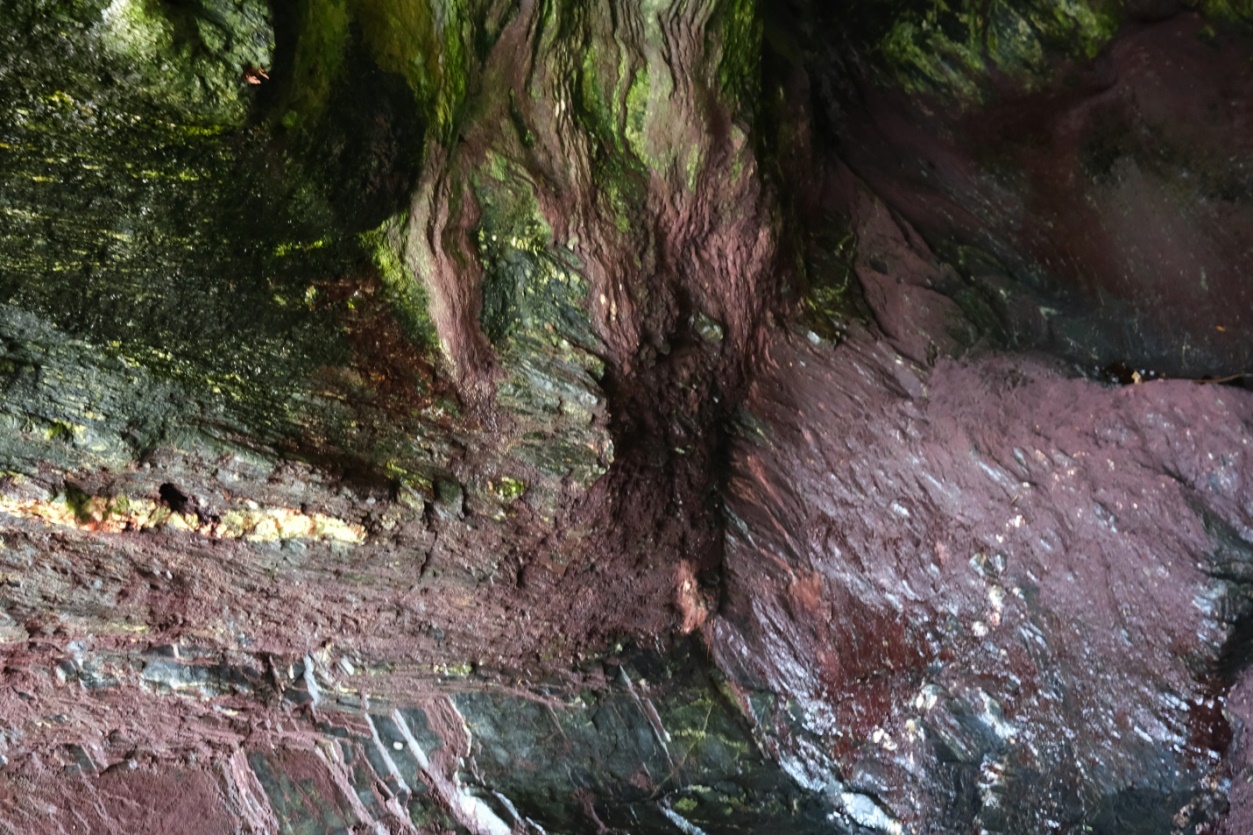
Figure 1: A shaded rock overhang with a purple-red coating of Rhodochorton purpureum. Mill Bay, Port San Juan, B.C., Canada. May 19, 2022. Photo ID: 27219 ©Seaweedwhisperings.com
Person 1:
Troglodyte.
Smothering everything.
Close up looks a bit honeycomb-like.
Doesn’t wander far from its damp, dark home.
Touching areas covered in red sea moss that are more exposed to the air/past prime, it feels slightly rough to the touch.
Indiscriminate.
When fresh it has a beautiful purple tinge with a pleasing-looking texture (noted especially at my first encounter with this alga in early winter). Contrasting to what I touched during this recent interaction, it appeared…, ah…, I can’t quite find the words for it…, bumpy but smooth at the same time – smoothed over bumps.
It prefers shady north facing cliffs as well as dark caves.
Not secretive, but prefers to live away from other species, so as to not have to interact.
Insecure?
When not fresh, it is rather unattractive, almost repulsive.
On horizontal surfaces fresher expanses of this seaweed can be very slippery.
When
dry it’s an ugly brown… deliberate avoidance tactics?
Keep
away, do not disturb!
Might have fascinating things to share but thinks no one would be interested, so doesn’t let others too close.
Wrapped up in its own world, perhaps a fantasy world?
Maybe it’s aware of that and doesn’t really want others to find out what’s really going on in its life.
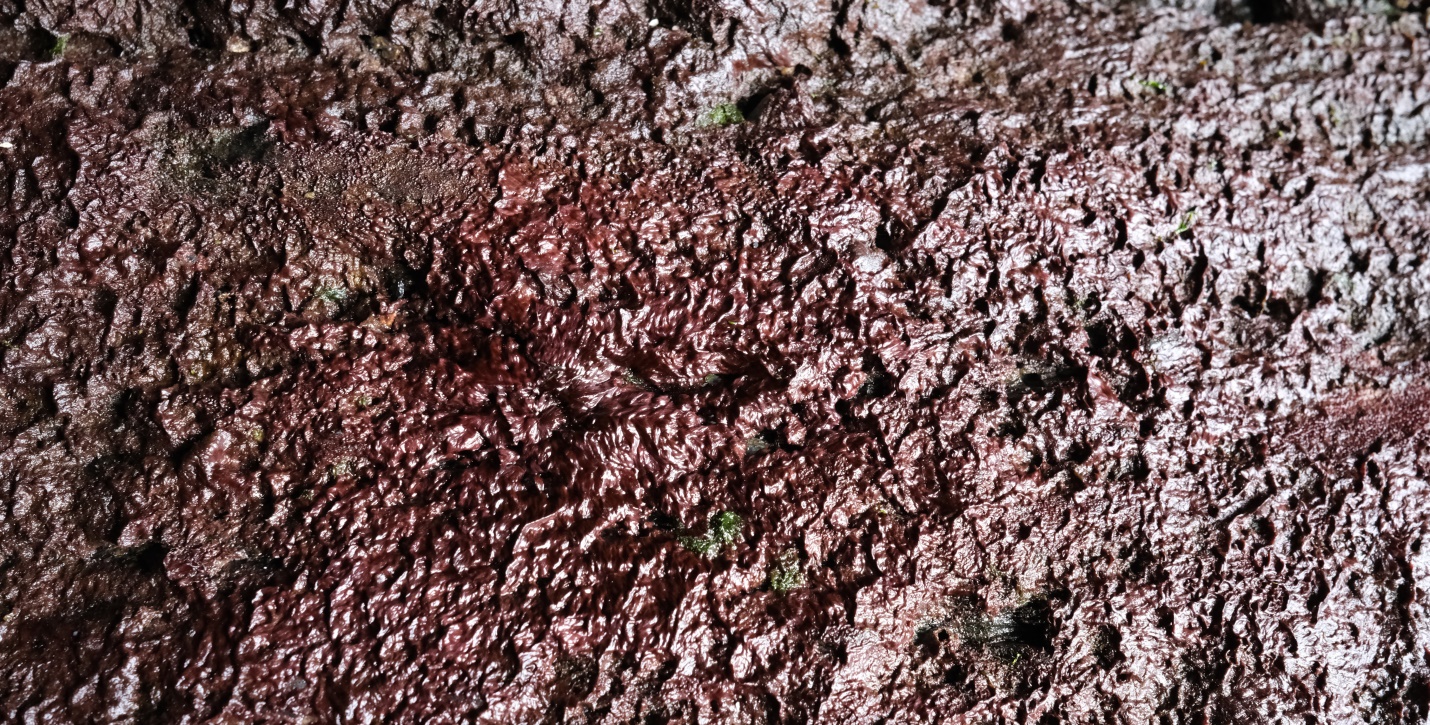
Figure 2: A closer view of this unusual red alga; Mill Bay, Port San Juan, B.C., Canada. May 19, 2022. Photo ID: 27220 ©Seaweedwhisperings.com
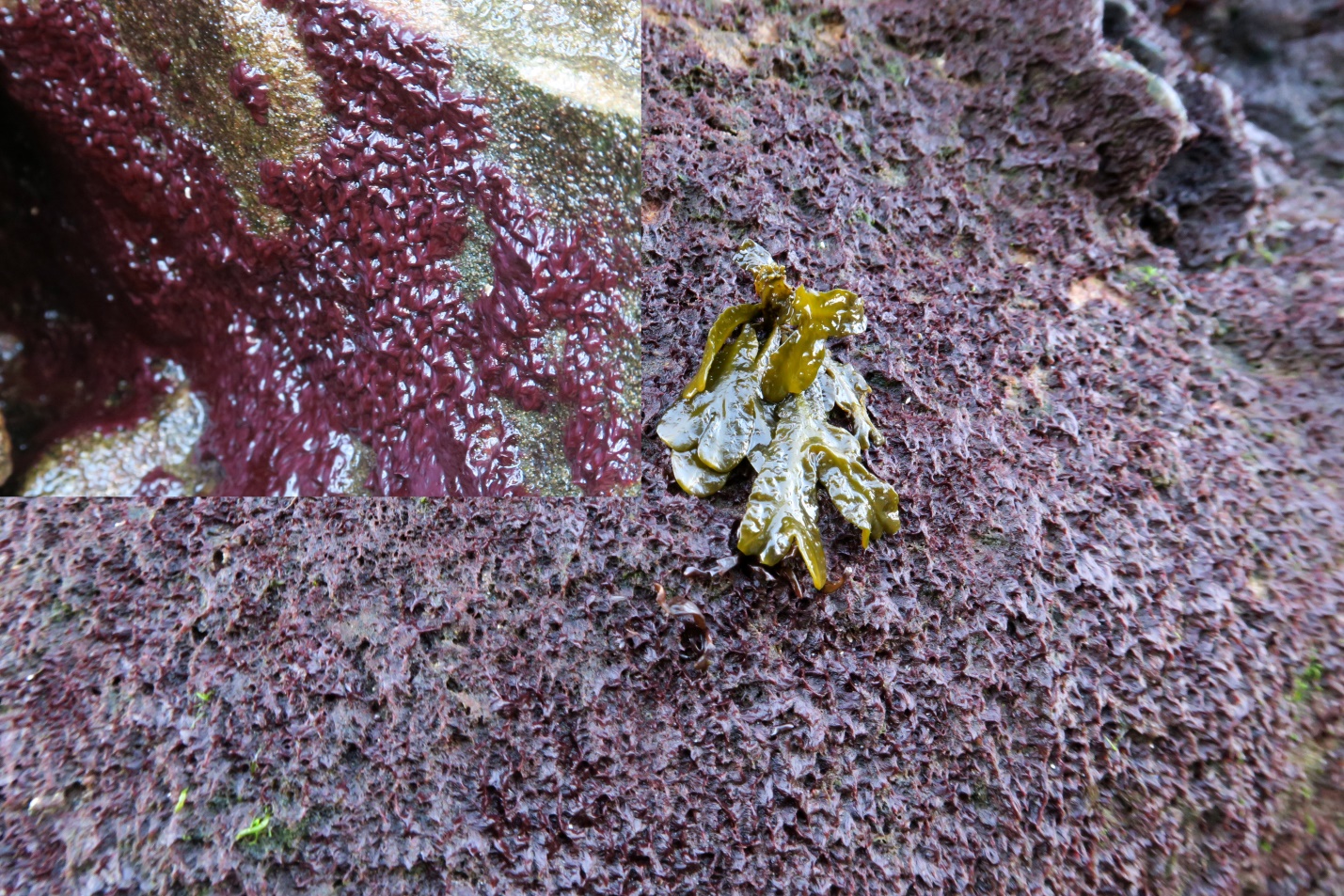
Figure 3: December/winter photographs show this same species in two settings; the larger back ground photo (with a small Fucus distichus alga) shows Red Sea Moss as it looks when the tide has left it dry and exposed on a north facing intertidal boulder. The inset photo shows the texture and color of this same species on the same day; in this image Rhodochorton purpureum is growing nearby but in a shady sea cave in the supralittoral zone. Botany Bay, Juan de Fuca Strait, B.C., Canada. December 4, 2021. Photo ID: 27221 ©Seaweedwhisperings.com
Person 2:
Way up in the highest of high intertidal regions, or in the dark north faces of very wet surge channels and caves, you make your home.
You ‘coat’ the rocks with your growth, a kind of growth that I would not liken to a “moss”, as one of your common names suggests, possibly you are closer to a “felt”, but more definitely you are something else. Something that comes from an entirely different ancestry – the algae.
A RED algae.
To find a red algae that makes its home so high up in the intertidal zone is most unusual.
How do you do it? When most other ‘reds’ are in low intertidal or subtidal areas only?
You seek out the very low light areas, even very low light areas in crevices, surge channels and sea caves. There you ‘paint’ the walls in hues of pink, rosy red, maroon, red purple and even purplish black. Tones upon tones of red.
Do you play with all the many expressions of red?
Even your Latin name uses two descriptors for red tones – Rhodo (chorton) and purpureum!
What determines your hue, Red Sea Moss?
Is it light?
Yes, but only in so far as exposure to sunlight desiccates you. I think what determines your hue is really about how much moisture you contain.
You are happiest being quite moist, indeed, but it is interesting to note that in your choice of habitat you would rarely be submerged and only sprayed by ocean waves and surges. And it seems that some of the caverns you populate are not only humid, but they receive fresh water seepage, and that seems to serve you, too.
So, maybe you can survive in areas of low salinity, or maybe you even prefer low salinity.
What nourishes you then?
Where there’s so very little light and where you would receive the lowest and most infrequent supply of nutrients from nutrient-laden ocean water?
Maybe you make do with very little.
AND perhaps you are a master of that – certainly in the niche you occupy you seem to do better than most any other macro algae.
But, I also very strongly sense that you are not in an act of competition or trying to ‘best’ anyone else. No, I think you’re just doing what you know to do.
Light, especially exposure to moderate or strong light, and drying – due to air circulation and winds, both these things bring you to your knees. You shrink within yourself, shrivel on the exterior, but you also don’t seem to totally perish. It seems to me that you retreat to the smallest physical presence you can possibly have. And then you WAIT.
Yes, you are good at waiting.
You wait and time passes unmeasured by you.
Perhaps it’s like a coma, a torpor, where life seems stilled to the lowest expression / activity.
All is still.
But life can return, and it does with the return of adequate water in combination with ever so gentle low amounts of light.
I wonder, because of the look of some of the richest and most vibrant coatings I’ve seen of Red Sea Moss, if this is like the uterine lining. It is ready for life, but not yet called into service to that end. Certainly low light and caverns and redness and squishy wetness all fit with the situation and description of endometrial tissue.
Up in your rocky habitat and tucked away in your caves it seems that you lead a life with few neighbors, few others in any proximity that may interact with you.
Is that OK by you also?
A little interaction with others goes a long way for you, too, just as only a little sea water and only a little light is the perfect amount for you.
Have you found your own company to be quite satisfying?
Are there some ‘measures’ to your ‘self’ that are quite extensive and so your own company has a contentment and satisfaction that is endless? Or does this overlap with the timelessness, too? Who’s measuring anything anyway…?
A seaweed so very far away from almost all other seaweeds – you occupy the extreme perimeter, Rhodochorton purpureum. Does your presence mark the transition zone?
Do you paint / coat / mark, with purple red color, the beginnings of the realm of the marine algae? Or from the other perspective, do you mark the end of the realm of the marine algae.
I think you do, AND you are so very difficult to describe in your ‘up close’ form that as a ‘marker’ you would be missed if you did not have such an expansive presence in the realm you declare.
If one notices, oh, why is that cavern reddish in color? Oh, why did I slip here on this oddly colored rocky gateway between beaches? …, this leads to your presence being ‘recognized’. But, if one takes a look up close, things get confusing.
When I tried to look at Red Sea Moss up close I was almost at a total loss on how to describe it. It has a presence that is clearly observable, but its specific morphology is very difficult to pin down.
Perhaps the ‘exterior’ is not of much importance in Rhodochorton’s life. Perhaps it’s all about what is going on within.
Maybe that’s why it doesn’t need much light to create ‘fuel’ for itself either. Possibly the ‘activity’ of this seaweed is mainly not in the physical realm.
Certainly with its love of life in dark sea caves, I could imagine the life of an individual who chooses seclusion. And chooses it not as a hardship or act of penance, but as an opportunity. The setting is perfectly conducive to connecting within – to connecting with god, however your consciousness holds these concepts.
Yes, maybe the Rhodochorton purpureum energy is suited admirably to do just this.
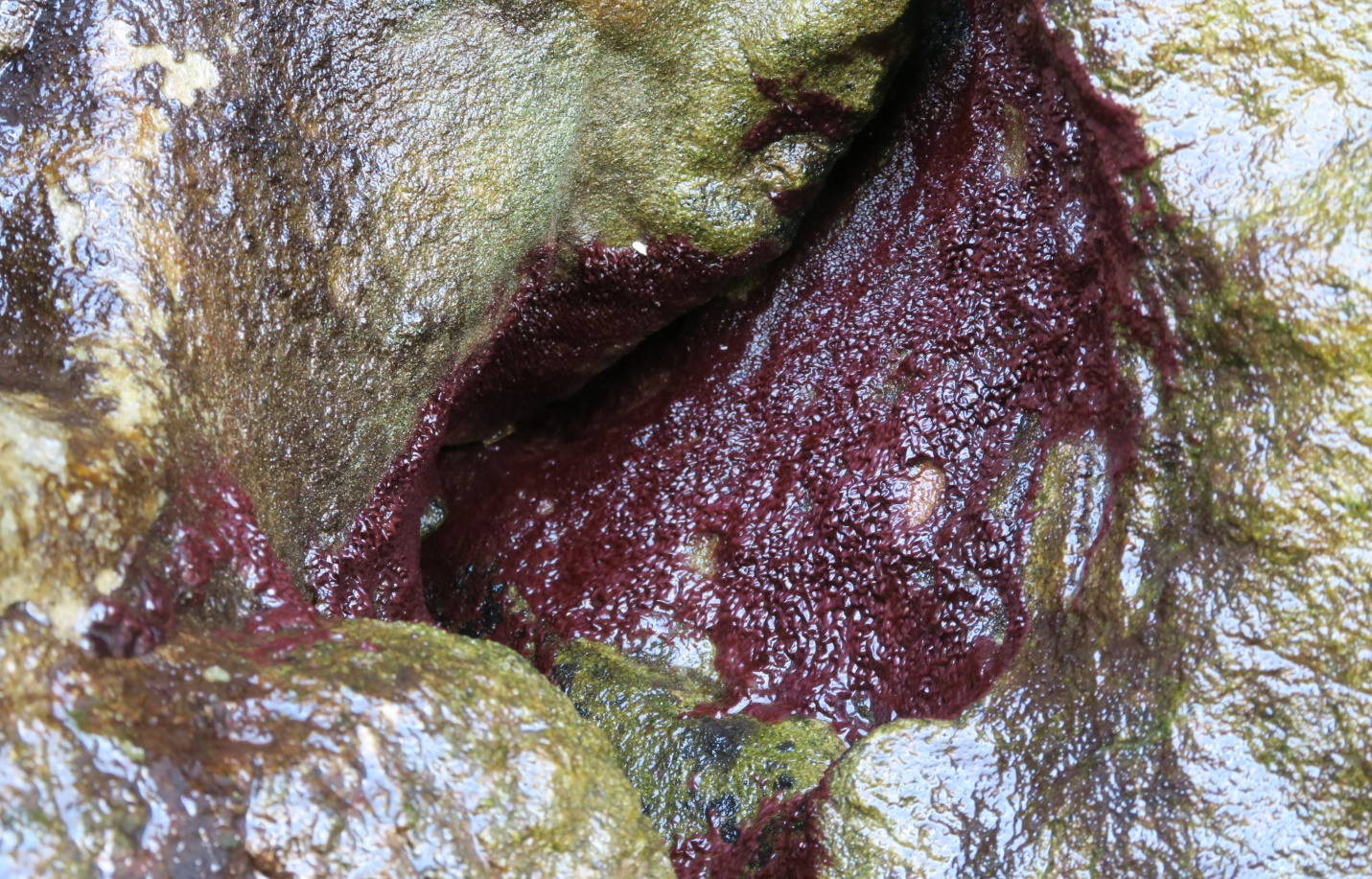
Figure 4 (above) and Figure 5 (below): Two more damp shady seaside caves/rock overhang areas that are replete in Red Sea Moss. Botany Bay, Juan de Fuca Strait, B.C., Canada. December 4, 2021. Photo ID’s: 27222 & 27223 ©Seaweedwhisperings.com
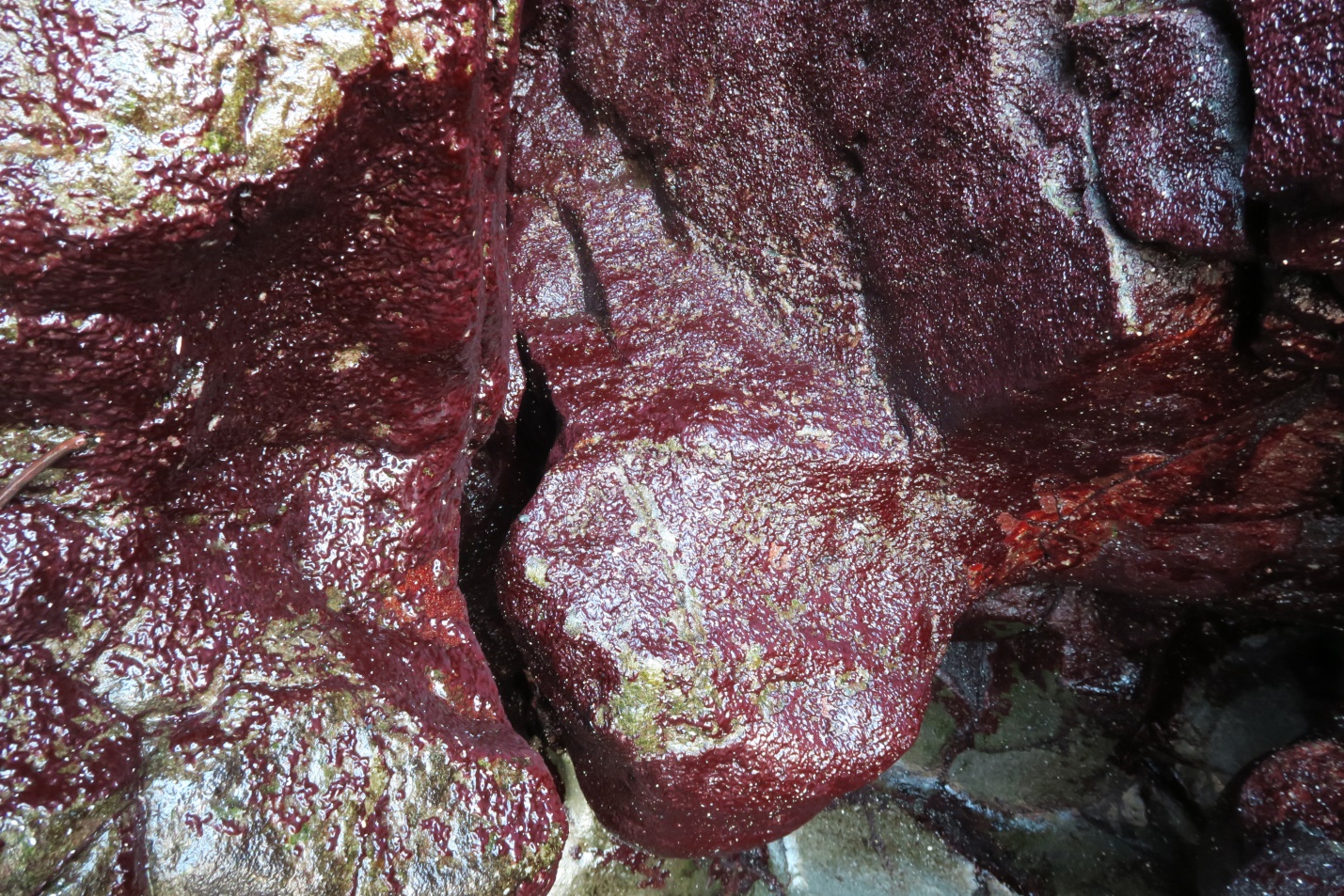
Discussion:
Wherever suitably moist or ‘wet’ this alga looks like a coating, like some very thick, wet paint, except that there is some texture to it. When it is replete with water it has bumps to the overall ‘coating’ texture beyond what is the topography of the rock surface it is growing on. In this condition, the Red Sea Moss seems like it would cover anything beneath it, although in many places where it likes to grow there is not much else growing from either the plant or algae kingdoms.
When observing this alga in this prime wet condition and doing one’s best with unenhanced vision, it is impossible to see any individual parts to it; individual or distinct stems or branches or tips of leading edges cannot be found.
However, upon touching the wet surface of this seaweed, one will discover that it is not adhered tightly to the rock. No. It ‘floats’ just a bit above the rock and there is a bit of a squishy almost spongy feel upon pressing down. No water is released with such pressure applied on the surface of Rhodochorton purpureum and there is a feel that there is some ‘elevation’ to it that is not something one expects or would be aware of by looking at it alone.
It is easy to imagine this seaweed to have some anchoring stems, only as many as is necessary, but that it dedicates most of its energy and activity to building a ‘canopy’ at the upper reaches of these support stems.
When in its ideal wet state, Red Sea Moss seems to create this interconnected red coating that floats, perhaps levitates, and that exists as a layer all “as if one” just a bit above the rocks and caves it grows on.
It is interesting that both Person 1 and Person 2 had difficulty finding words to describe this seaweed. It was a feeling as if it shouldn’t be so difficult, yet in fact, it was. Is there something inscrutable, something possibly a bit mysterious about Red Sea Moss that defies description?
To understand you at all Rhodochorton, does one need to employ less typically used senses? Does one need to set aside the dominant physical senses and perceive in other ways?
I think one would find that this is not a life form that identifies/prospers as disparate individuals all that much. Is there an interconnectedness that is possible in your damp wet darkness that runs all through? It seems this is not just possible, but probable, where Red Sea Moss thrives. This is prosperity to you. This is how you best embrace your life possibilities.
The energy of this seaweed despite its growth habit of ‘smothering everything’ seems to be rather uncertain. Perhaps a sense that when in doubt, just keep growing until you have covered as many eventualities as possible.
How did you get to this unusual location and why have you chosen to stay here and adapt? What is your purpose here?
By just keeping doing what you can do once everything is “covered”, there is a sense that you can rest a while, know that you have done your best in the strange circumstances in which you found yourself, and wait for whatever might be next.
So you have now completed one phase and are ready for the next indeed rather like a uterine lining waiting of the fertilized egg to implant. You are ready but you need the seed of an idea that matches the groundwork that you have prepared for it. If the idea is not compatible, then what, Rhodochorton purpureum? Do you return to your life of quiet contemplation with those of similar ideas or do you once again risk damage by allowing outside influences in?
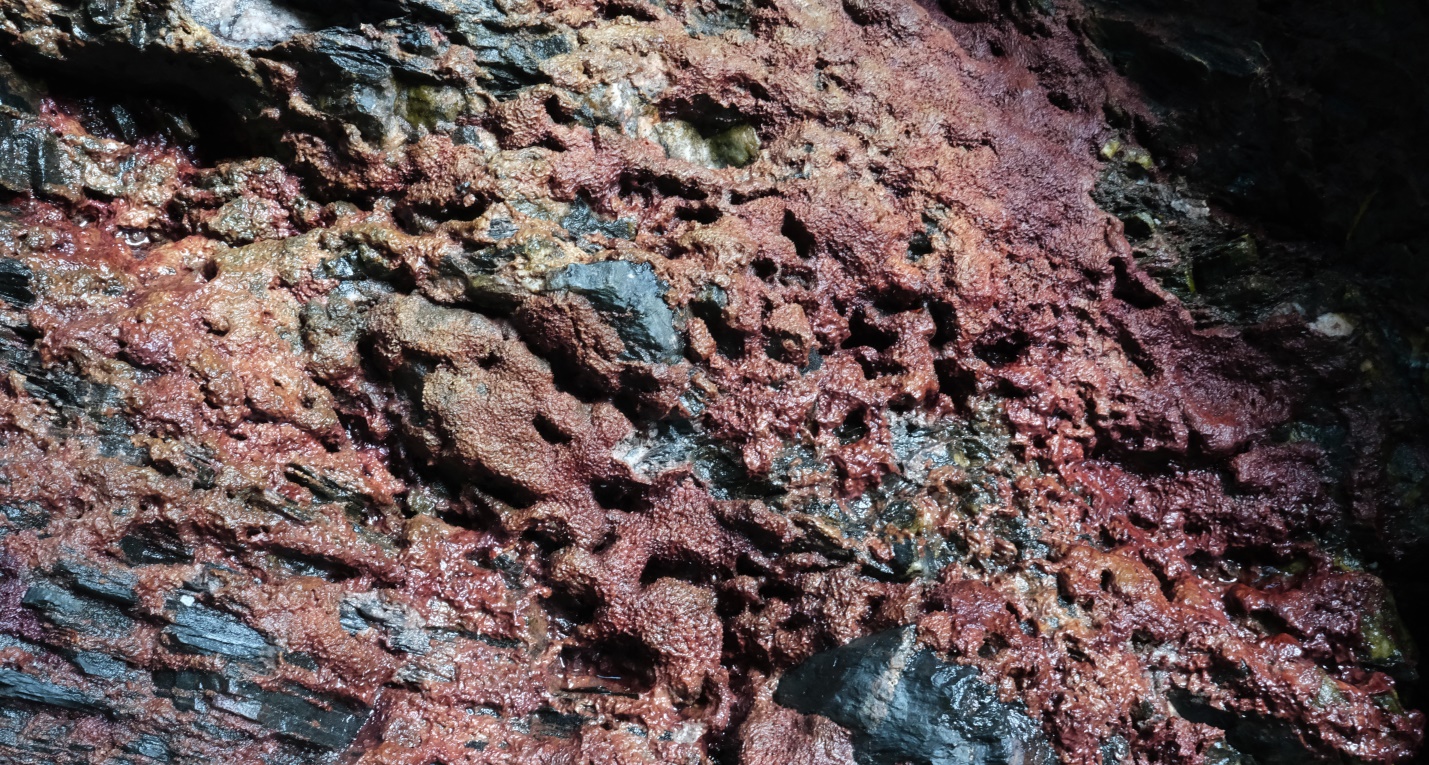
Figure 6: A section of rock coated in Red Sea Moss; it seems that springtime day length and seepage constituents may be impacting the seaweed here as evidenced by the discoloration. Mill Bay, Port San Juan, B.C., Canada. May 19, 2022. Photo ID: 27224 ©Seaweedwhisperings.com
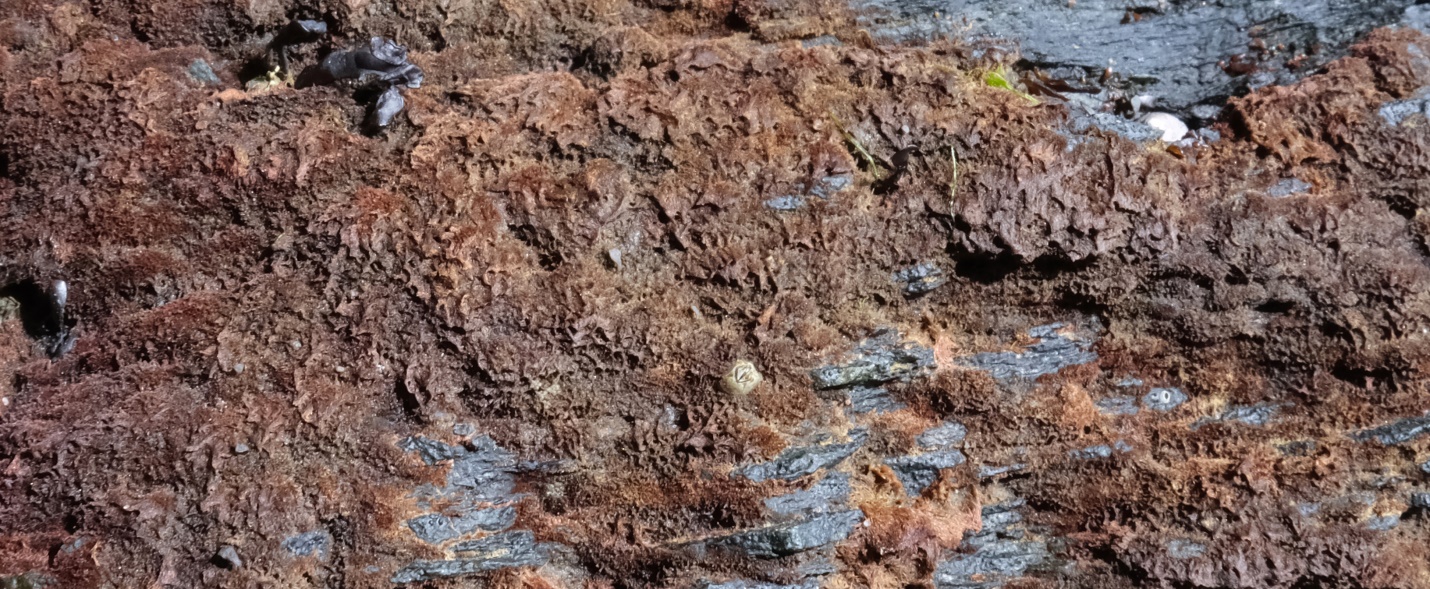
Figure 7: When dried out, the ‘honeycomb’ look is quite evident. Mill Bay, Port San Juan, B.C., Canada. May 19, 2022. Photo ID: 27225 ©Seaweedwhisperings.com
Biology & Natural History Information:
Description:
Thallus consists of filaments of cells, 3 to 4 times as long as broad, forming irregularly branched prostrate axes from which grow erect axes which are usually 5 – 10 mm tall but in good conditions can grow to 3 cm in length. The erect stems are sparsely branched at the base and they branch more frequently, though never densely, towards the apices. The axes themselves are microscopic, being 20 µm or less in diameter. While diminutive in individual dimensions, growths of Rhodochorton purpureum can be rather conspicuous where they cover extensive areas of rock as dark red or purple-red, soft, velvety and damp turfs.
Habitat:
Matted tufts or thin turfs of this red alga occur on rock in the supratidal (even up to 0.5km inland) and in the high intertidal on the walls of sea caves, damp overhangs or in shady rock crevices. It also grows epiphytically on kelp, especially Laminaria hyperborae stipes, in the sublittoral zone; this is a species of rather diverse habitats.
North Pacific Distribution:
Arctic Ocean, Bering Sea and Aleutian Islands, Alaska, to Baja California, Mexico; Japan; Russia.
Remarks:
Only the tetrasporangia are known (monosporangia absent) and these form in microscopic stalked club-shaped growths near the tips of the erect axes mostly in winter. This is the type species (lectotype) of the genus Rhodochorton.
Classification:
Phylum: Rhodophyta
Class: Florideophyceae
Order: Acrochaetiales
Family: Rhodochortonaceae
Genus: Rhodochorton
Species: Rhodochorton purpureum (Lightfoot) Rosenvinge 1900
Former name(s): Byssus purpurea Lightfoot
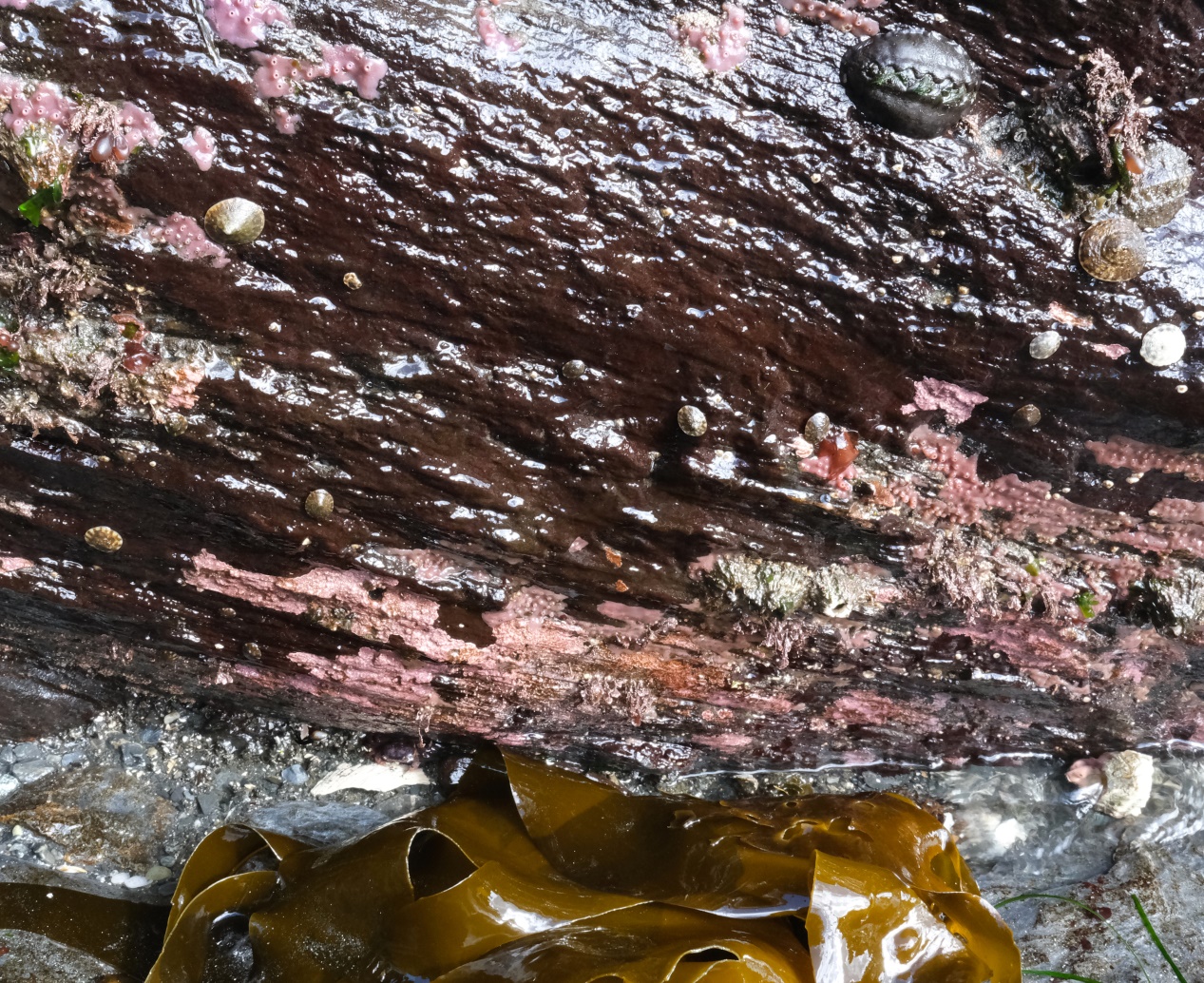
Figure 8: The north/shaded wall of a surge channel, coated with Red Sea Moss (and pink coralline algae and purple encrusting sponge); a piece of kelp rests in the shallow water at the base. Mill Bay, Port San Juan, B.C., Canada. May 19, 2022. Photo ID: 27226 ©Seaweedwhisperings.com
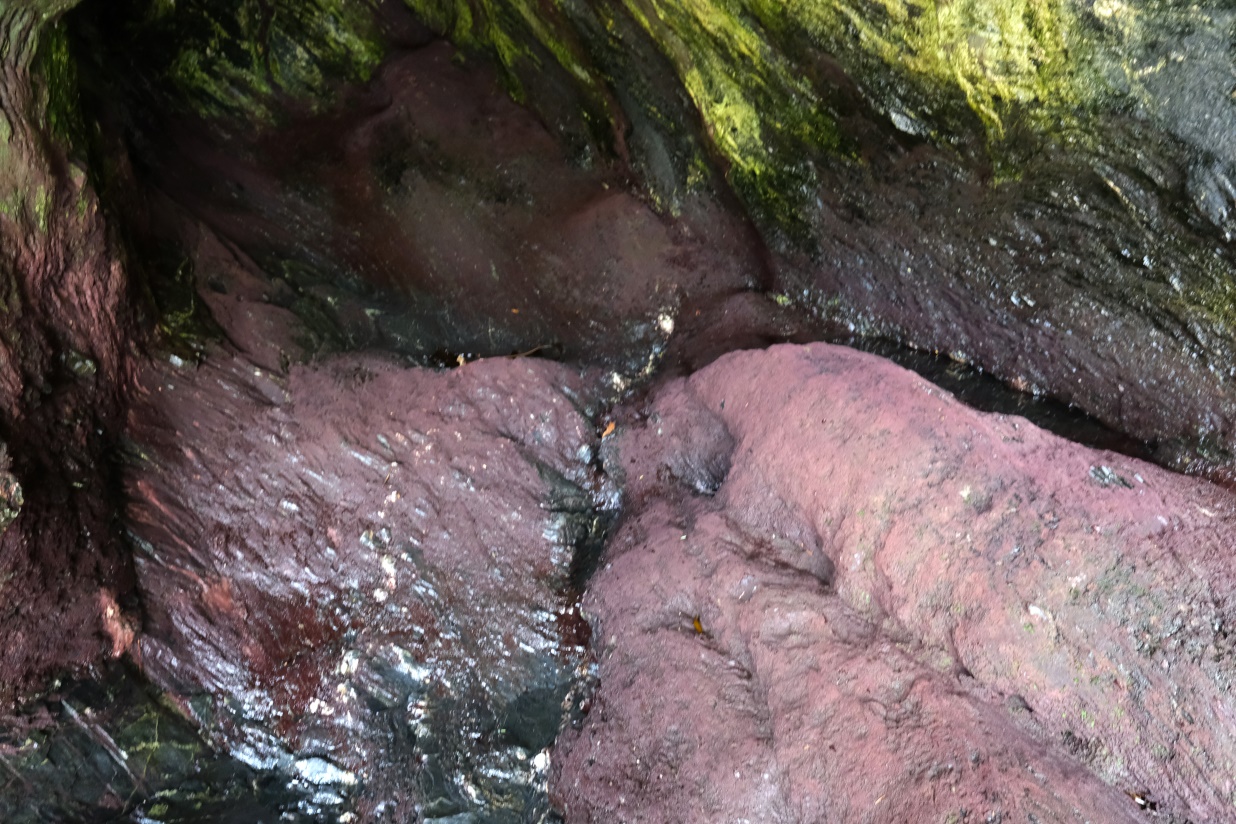
Figure 9: A sea cave coated with Rhodochorton purpureum; stepping here is the seaside equivalent of walking on ice. This seaweed holds water very well and forms an extremely slippery surface. Mill Bay, Port San Juan, B.C., Canada. May 19, 2022. Photo ID: 27227 ©Seaweedwhisperings.com
![]()